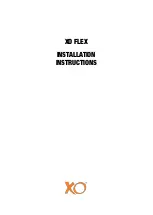
8.5.1 Identification of
hydraulic
hoses
Hydraulic hoses must be replaced after 6 years.
For this purpose pay attention to the manufactur-
ing date on the hose line (year/month) and on
the hose (quarter/year)!
Hose line Hose
8.5.2 Maintenance intervals
After the first 10 operating hours and then
every 100 operating hours
¾
Check all components in the hydraulic system
for leak tightness.
¾
If necessary retighten the screw fittings.
Before each commissioning
¾
Check the hydraulic hoses for any apparent
deficiencies.
¾
Remedy chafed sections on hydraulic hoses
and pipes.
¾
Immediately replace worn or damaged hy-
draulic hoses and pipes.
8.5.3 Inspection criteria for
hydraulic hoses
NOTE
For your own safety and to reduce any possible
environmental impact pay attention to the fol-
lowing inspection criteria!
Replace hoses, if these fulfil at least one
criterion from the following list:
-
Damage to the outer layer to to the ply (e.g.
chafing, cuts, cracks).
-
Embrittlement of the outer layer (formation
of cracks in the hose material).
-
Deformations, which do not correspond
with the natural shape of the hose. Both in
pressureless and pressurized condition or
in case of bending (e.g. layer separation,
formation of blisters, squeezing, buckling).
-
Leakages.
-
Failure to comply with installation require-
ments.
-
The max. utilization period of 6 years has
expired.
The date of manufacture on the hydraulic
hose fitting plus 6 years is decisive. If the
fitting is marked with the manufacturing
date "2009", the utilization period ends in
February 2015. See also "Identification of
hydraulic hoses".
NOTE
Leaking hoses / pipes and connecting pieces
are frequently the result of:
-
missing O-rings or seals
-
damaged or poorly fitted O-rings
-
brittle or deformed O-rings or seals
-
Foreign objects
-
loose hose clamps
107
Summary of Contents for LEEB PT 330
Page 4: ......
Page 6: ......
Page 33: ...1 17 Position of safety stickers 33...
Page 34: ...34...
Page 187: ...Diagram a with example 187...
Page 201: ...201...
Page 202: ......















































